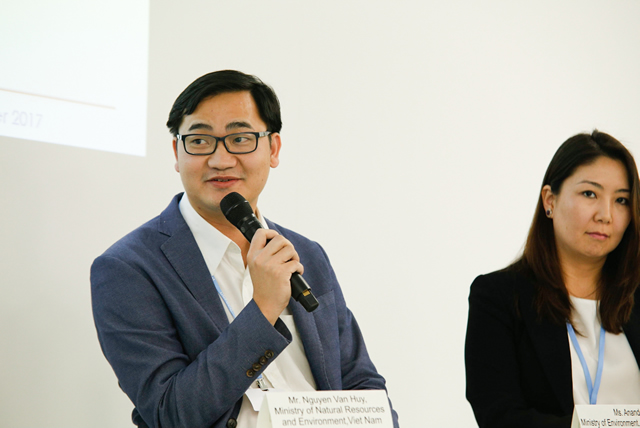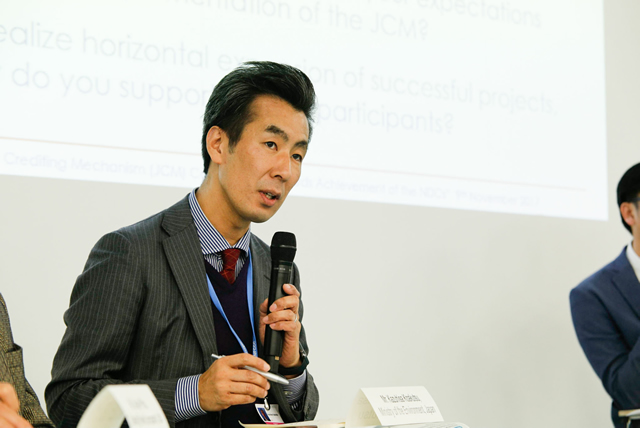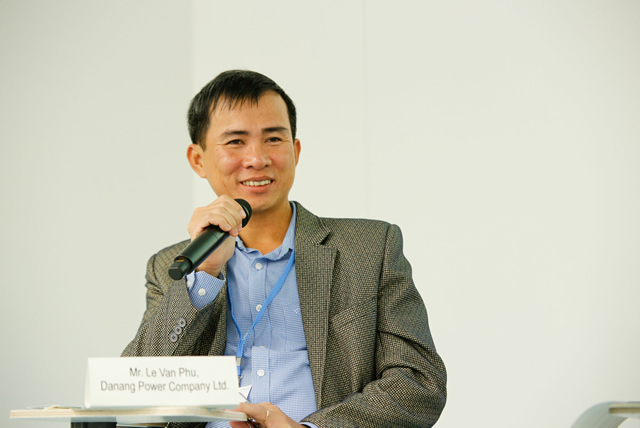Final Programme
Video presentation (2 min):
Trailer with current JCM facts
- Supervised by MOEJ and OECC
Keynote presentation (25 min):
JCM Project in Danang City, Vietnam – Implementation, Achievements and Expectations
- Mr. Le Van Phu, Deputy head of Technical division, Danang Power Company, Ltd
(PDF - 1.3 MB)
Panel discussion (60 min)
Facilitator:
- Prof. Dr. Kazuhiko Takemoto, President, OECC
(PDF - 34 KB)
Discussant from JCM partner countries and Japan:
- Ms. Anand Tsog, Climate Change Officer, Department of Climate Change and International Cooperation, Ministry of Environment and Tourism, Mongolia
(PDF - 840 KB)
- Mr. Nguyen Van Huy, Director, Division of Science, Technology and International Cooperation; Department of Climate Change, Ministry of Natural Resources and Environment (MONRE), Viet Nam
(PDF - 929 KB)
- Mr. Kazuhisa Koakutsu, Director for International Negotiation, Ministry of the Environment, Japan
(PDF - 122 KB)
From the perspectives of efficient and effective achievement of NDCs, government officials from JCM partner countries and Japan answered to 3 guiding questions as follows;
- Could you share the current status and progresses on the implementation of the JCM in your country?
- From the perspectives of efficient and effective achievement of NDCs, what are your expectations regarding implementation of the JCM?
- To realize horizontal expansion of successful projects, how do you support project participants?
Session Summary
- Mr. Phu, Danang Power Company, Ltd. (DNPC), shared the achievement of energy efficiency efforts through the JCM projects implemented in 2016. DNPC expressed its view to install more Amorphous High Efficiency Transformers in their network to achieve their 2020 target. Such efforts would benefit not only DNPC itself but also its customers and clients while contributing to addressing climate change.
1. The current status and progresses on the implementation of the JCM
- Mongolia: Heat Only Boiler (HOB) projects were not only practical but they are well appreciated because the efficient HOB reduced air pollution in winter caused by consumption of low quality coal. Solar PV projects implemented in suburb of Mongolia enabled greenhouse cultivation under the PV panels and the projects were called “solar-farm”. 10MW solar PV project in Darkhan City was successfully developed within a short period of time. In addition to energy efficiency and renewable energy projects, we would welcome projects contributing adaptation.
- Viet Nam: 5 projects and 10 methodologies were approved. Viet Nam was the second largest country in the JCM following Indonesia. We were ready for approving new project proposal. 6th Joint Committee decided to issue credits for 2 projects. Vietnamese projects participants (PPs) gained many benefits from the JCM.
- Japan: The JCM was at an implementation stage: among 17 partner countries, over 100 projects were in the pipeline and credits were already issued in 4 countries.
2. From the perspectives of efficient and effective achievement of NDCs
- Japan: As Japan, NDC stated 26% emissions reduction (ER) target and 50 to100 million t-CO2 of ER were to be realized through the JCM. The JCM methodologies were designed very conservatively to achieve net ER which were not to be credited. Facilitating JCM projects implementation would contribute to promoting the more ER in partner countries. With regard to ways for broadening the JCM, a good example was given by the projects installing Amorphous High Efficiency Transformers which showcased replication of a project to another and resulted in consisting of 10% of transformers in Viet Nam now.
- Viet Nam: Our target was 25% of ER with international support. NDC would identify a list of prioritized technology and the JCM was a one option in line with the priority. We were discussing carefully how we could use the JCM efficiently for contribution to NDC in Viet Nam, and how we would handle the credit issued for Vietnamese side. The JCM should be implemented as a part of NDC.
- Mongolia: In establishing GHG inventory system we would need a lot of capacity building efforts. The lessons learned through implementation of the JCM could contribute for these efforts.
3. To realize horizontal expansion of successful projects
- Japan: The projects installing Amorphous High Efficiency Transformers were implemented in collaboration with local partners. Some power companies followed the effort and the equipment was stared to be introduced even outside of the JCM financing programme. Taking the JCM projects as a “showcase” further project implementation was facilitated in the field of energy efficiency in a self-sustainable way. This kind of replication could also be seen in projects installing, e.g. energy efficient chillers and LED lightening.
- Viet Nam: We would facilitate communications among stakeholders in a private sector through a platform. In addition to prioritized technologies, we would like to promote technologies which may realize replication of projects under the JCM.
- Mongolia: There were a lot of ideas of technologies to be replicated. From the next year, the government of Mongolia would put more efforts on outreach and awareness rising through which we would like to consult with stakeholders in private sector to promote further project implementation.
Key Messages
- Good practices realized under the JCM would help to identify appropriate technologies which would contribute ER in the partner countries and achievement of their NDC.
- Taking the JCM projects as a “showcase” further project implementation was facilitated in the field of energy efficiency in a self-sustainable way.
- The governments of JCM partner countries were active in involving their private sectors to share ideas/experiences in project development aiming for further promoting of JCM project implementation.
- The government policy would be important because it could show signal to the market.
Name and organisation of the person(s) who prepared the summary
Yuriko Koyanagi, Overseas Environmental Cooperation Center, Japan (OECC)
Photos



